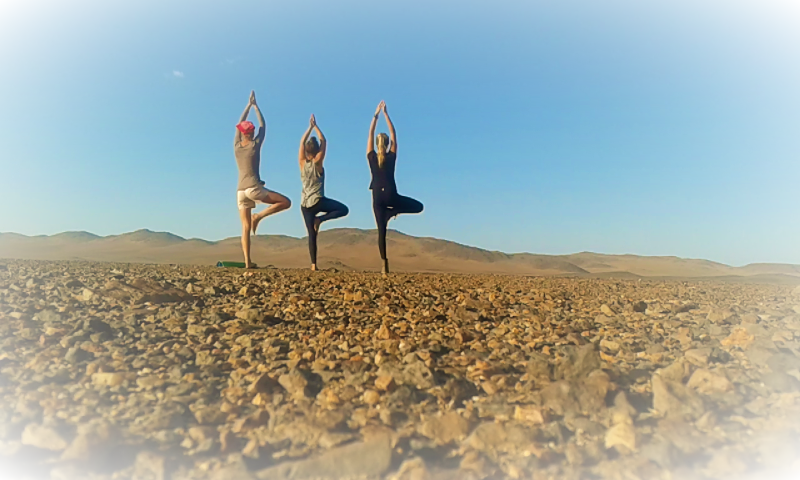
The practice of Yoga combined with controlled breathing equates to both strength and cardiovascular training – yet to engage in the practice with the aim of ‘working out’ defeats the true goal. What you can expect to work is the capacity of your mind, the body only serving as its reflection and as testing ground of your ability to strengthen, soften, endure and extend.
The yogic term TAPAS is the Sanskrit translation for austerities undertaken by practice to further personal development. By the novice they can be understood as the pain that leads to purification. This is not only the muscular burn you experience during practice. While the muscles need to strengthen, lengthen and detoxify you’re breaking through old habit patterns of the mind, reconstructing neuro-pathways between the body and the brain. The impressions of negative experiences left on the mind are called SAMSKARAS. These aggregate and form larger behavioral patterns that are called the VASANAS. The deeper aim of Yoga is to burn through these patterns and reveal the purity of inner being. When the tapas enter higher awareness, you begin to awaken, known as VIVEKA or realizing wisdom. The wisdom is the lamp of knowledge that illuminates the inner world. The physical practice is a powerful tool, the purpose and intention of practice is inner awakening.
Many of the physical, emotional and psychological obstacles you will encounter in the practice are mentioned in the SUTRAS composed by Patanjali; a 2000 year old text compiled of 196 aphorisms organized into 4 sections, that serve as a guide to the inner work of the yogic methods.They are a valuable reference in understanding our psychological reactions to practicing and give you confidence that you are embarking on a time-honored path that has proven itself in timeless tradition.
In the classic work of Patanjali, the mind is likened to an ocean of awareness called CITTA. The waves of this ocean are thoughts and sense perceptions, known as VRTTIS. When you have a sensory experience, it creates a wave (VRTTI) on your mind (CITTA). The waves leave an impression (SAMSKARA), which when repeated create a deep groove in the fabric of the mind (VASANA). This conditions your behavior. Working with these behavioral patterns defines the purification aspect of Yoga.
Sutra 1.5 identifies two types of experiences: painful (KLISHTA) and not-painful (AKLISHTA). Painful experiences generate negative ripples, spin the wheel of suffering and dig deeper into your destructive patterns. Using the metaphor of the ocean of your mind, these waves can capsize boats, harm innocent beings and destroy the material world.
Not-painful or pleasurable experiences are the gentle waves that do no harm to you or others. These are the calm waves that caress the shore after a storm, leaving no ripple effects on the ocean of the mind and don’t distort the face of Earth. We go through a storm to clear out the source of painful experiences and to understand to embrace life with more presence and grace.
This doesn’t mean that we shouldn’t have painful experiences, but that we shall learn to navigate them through the light of awareness.
In daily practice your internal capacity will fluctuate; like feeling the sunshine in a clear blue sky just before a storm arises. Thunder and lighting in the field of your mind in one moment, peace and calm in the next. There’s no predicted meteorological report for our psychological weather. The lesson is to realize our temporal nature and to cultivate a watchful consciousness that is not tempted to fight against the dark nor hold onto the light. Just as you can’t change the wind to meet your personal sail, you can’t change what you think and feel without the practice of a receptive and discerning state of mind. You can however change your reaction to the weather and your response to your emotional storms. The promise of practice says, if you can calmly persevere, you will experience the deep peace of your waking self.